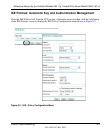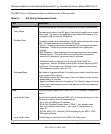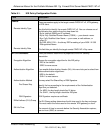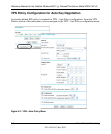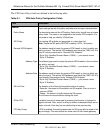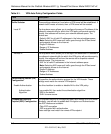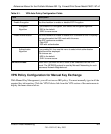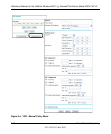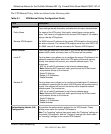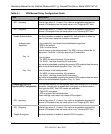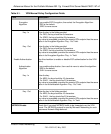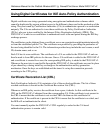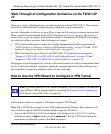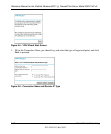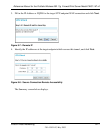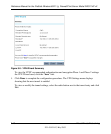
Reference Manual for the ProSafe Wireless 802.11g Firewall/Print Server Model FWG114P v2
Virtual Private Networking 8-11
201-10301-02, May 2005
The VPN Manual Policy fields are defined in the following table.
Table 8-1. VPN Manual Policy Configuration Fields
Field Description
General
These settings identify this policy and determine its major characteristics.
Policy Name The name of the VPN policy. Each policy should have a unique policy
name. This name is not supplied to the remote VPN Endpoint. It is used to
help you identify VPN policies.
Remote VPN Endpoint The WAN Internet IP address of the remote VPN firewall or client to which
you wish to connect. The remote VPN endpoint must have this FWG114P
v2’s WAN Internet IP address entered as its “Remote VPN Endpoint.”
Traffic Selector These settings determine if and when a VPN tunnel will be established. If
network traffic meets all criteria, then a VPN tunnel will be created.
Local IP The drop down menu allows you to configure the source IP address of the
outbound network traffic for which this VPN policy will provide security.
Usually, this address will be from your network address space. The
choices are:
• ANY for all valid IP addresses in the Internet address space
Note: Selecting ANY means all traffic goes through the IPSec tunnel
and prevents access to the Internet.
• Single IP Address
• Range of IP Addresses
• Subnet Address
Remote IP The drop down menu allows you to configure the destination IP address of
the outbound network traffic for which this VPN policy will provide security.
Usually, this address will be from the remote site's corporate network
address space. The choices are:
• ANY for all valid IP addresses in the Internet address space
Note: Selecting ANY means all traffic goes through the IPSec tunnel
and prevents access to the Internet.
• Single IP Address
• Range of IP Addresses
• Subnet Address
Authenticating Header (AH)
Configuration
AH specifies the authentication protocol for the VPN header. These
settings must match the remote VPN endpoint.
Note: The "Incoming" settings here must match the "Outgoing" settings on
the remote VPN endpoint, and the "Outgoing" settings here must match
the "Incoming" settings on the remote VPN endpoint.



